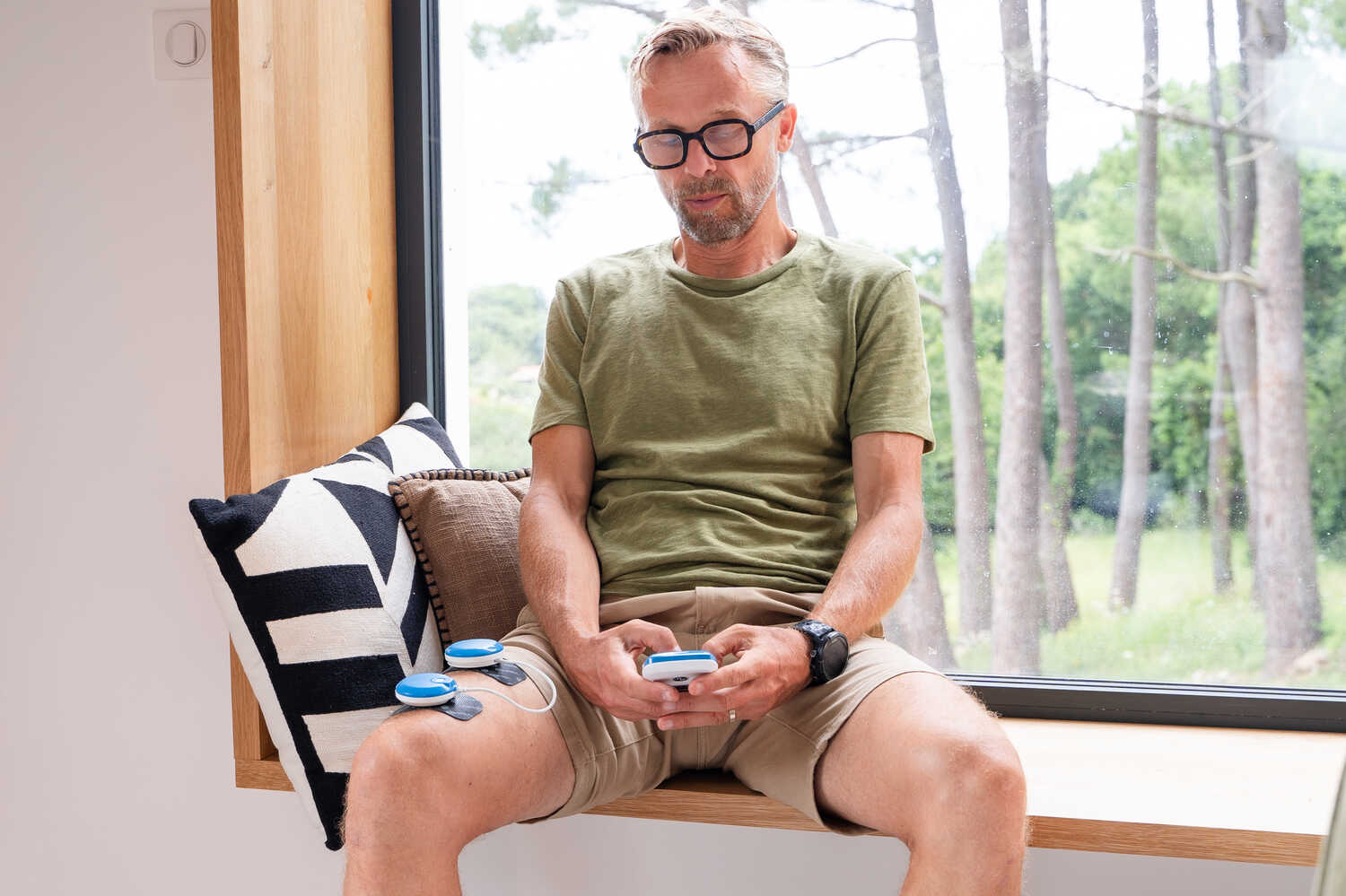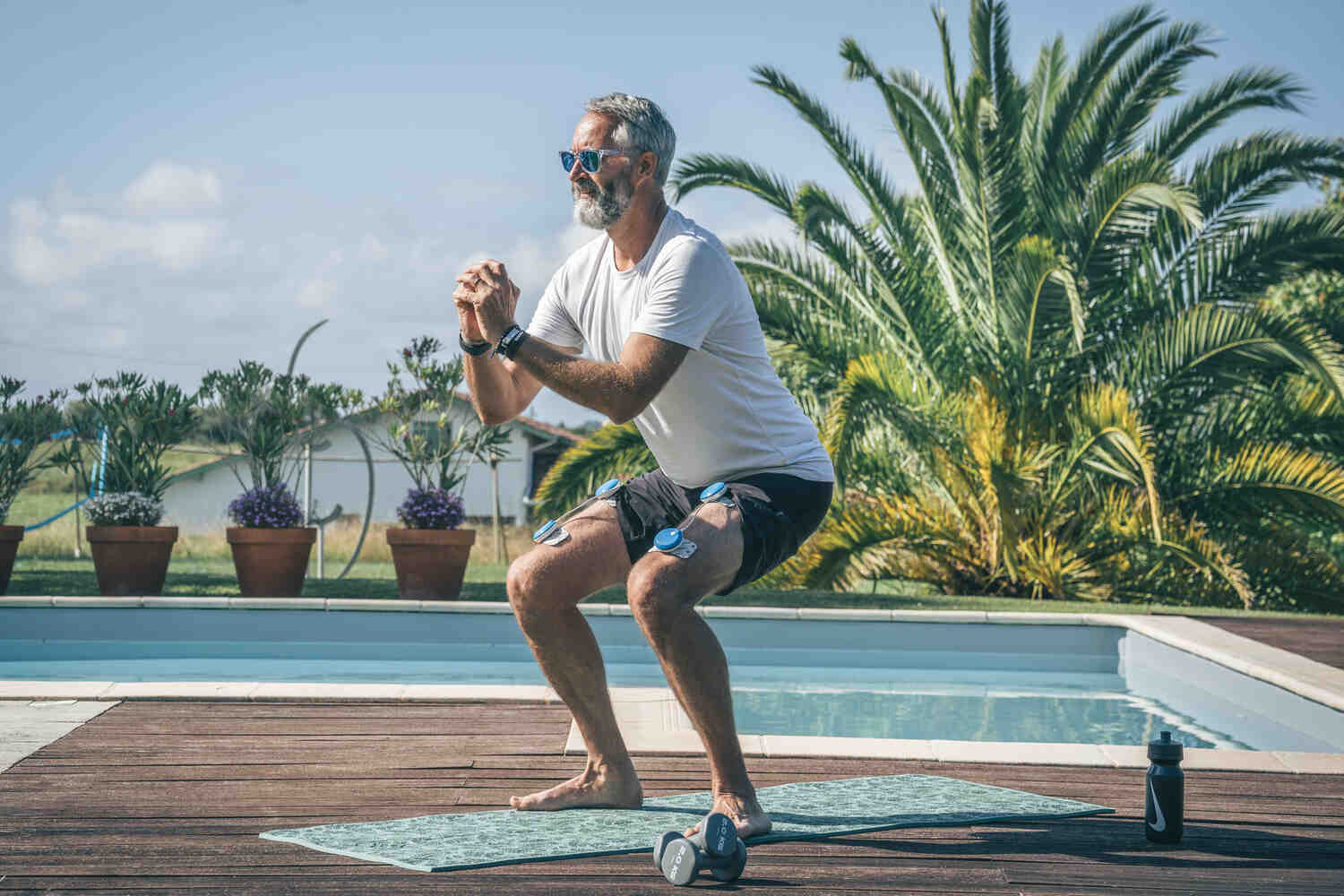How to Maintain Muscle after 50: Nutrition, Exercise, and Electrostimulation
After the age of 50, muscle mass and strength inevitably decline. It’s a fact: we lose between 3% and 8% of muscle mass every decade. While this is more noticeable for some than others, the big question is: what’s the secret to slowing this down? How can exercise and electrostimulation help you maintain muscle after 50?

Why Do Muscles Decline After 50?
Aging: The Primary Cause of Muscle Loss
Age is the main culprit behind muscle loss. After the age of 30, we typically lose 3% to 8% of muscle mass every decade—equivalent to about 150 grams annually after 50.
This process is more pronounced in men than in women. At first, the muscle is gradually replaced by fat, so while body size may remain similar, muscle functionality and strength diminish.
Additionally, aging slows amino acid metabolism, leading to reduced absorption, assimilation, and conversion of nutrients into proteins. Nutritional deficiencies and decreased production of growth hormones and testosterone further impair muscle fiber synthesis. Moreover, aging causes a loss of neurons, which reduces the associated fibers.
A Sedentary Lifestyle Speeds Up Muscle Loss
Sedentary habits accelerate muscle atrophy. When muscles aren’t used, they’re lost—it’s that simple. While this process isn’t inevitable, reversing it becomes harder with inactivity.
Stopping physical activity due to back or knee pain, for example, can accelerate loss and make it harder to restart later. Studies show that just one week of inactivity can reduce muscle strength by 10% to 15%, particularly in the lower limbs.
Lastly, the natural decline in muscle stem cells over time makes it harder to rebuild or renew fibers.

Why Muscle Loss is a Problem
Muscle loss can make you feel weaker, reduce mobility, and increase the risk of falls and fractures. It can also make everyday tasks more challenging. Beyond physical limitations, the reduction in lean mass affects your overall health:
- Poorer blood circulation
- Reduced ability to regulate body temperature
- Instability in blood sugar levels
- Weakened immune system due to protein deficiencies
- Lower bone density, increasing the risk of osteoporosis
- Fewer calories burned, leading to easier fat storage
How Nutrition Can Help Prevent Muscle Loss
Protein: The Building Block of Muscle
A protein-rich diet is essential for muscle maintenance. Research suggests prioritizing lean animal proteins such as poultry, fish, and seafood while minimizing saturated fats from fatty meats and processed foods.
Egg whites are particularly effective, offering an optimal balance of amino acids. Dairy, whey protein, and plant-based sources like chia seeds, hemp seeds, nuts, mushrooms, algae, and spirulina are excellent options. Combining grains with legumes provides a balanced plant-based protein source.
To combat muscle loss, aim for at least 1 to 1.2 grams of protein per kilogram of body weight daily—higher than the recommended 0.8 to 1 gram for healthy adults. For those over 65, increasing protein intake can counter reduced digestive absorption.
Protein: The Source of Longevity
Recent studies suggest that reducing amino acid intake can increase longevity and lower the risk of age-related diseases. Striking the right balance—enough protein for maintenance but not excess—is key.
How can Exercise Prevent Muscle Loss
The best way to combat muscle atrophy is regular physical activity—ideally at least three times a week or 150 minutes weekly, as recommended by the World Health Organization.
Strength Training Works at Any Age
Studies prove that muscle strength can improve at any age, even into the 70s and beyond. Resistance training, such as bodyweight exercises or weightlifting, is particularly effective. Interval training that alternates between intense effort and endurance also promotes growth hormone production.
With just three weeks of consistent training, you can regain much of the muscle mass lost annually after 40.

How can Electrostimulation Help Maintain Muscle After 50?
Electrostimulation is an excellent addition to your fitness routine, helping tone muscles conveniently at home. Regular use of an electrostimulator delivers visible, lasting results, even for those with limited time or who prefer not to visit a gym.
Benefits of Electrostimulation
- Muscle Reinforcement
Electrostimulation targets deep fibers often missed during traditional workouts, helping maintain tone and promote growth. - Improved Circulation
It boosts blood flow, enhancing oxygen and nutrient delivery for muscle regeneration and quicker recovery. - Injury Prevention
By isolating specific muscles, electrostimulation strengthens weaker areas, improving posture and reducing fall risk. - Pain Relief
It can alleviate chronic pain through TENS (transcutaneous electrical nerve stimulation) therapy, which releases endorphins to reduce discomfort. - Flexibility and Mobility
Electrostimulation improves elasticity and mobility, counteracting age-related stiffness.
Conclusion
To stay muscular after 50, prioritize regular exercise, a protein-rich diet, and complementary tools like electrostimulation. Together, these strategies can help you maintain strength, mobility, and vitality as you age.
Proven Effectiveness
Backed by clinical studies proving their effectiveness, Compex stimulators also belong to the category of Class II medical devices. They also meet the needs of the European Medical Standard 93/42 EEC.
Compex - Always with you
We're on the side of athletes, amateurs and ordinary people, from the search for better performance to post injury recovery, from post fatigue massage to pain treatment. At Compex, we have just one goal: people's well being.
Choose the one that's right for you, by taking a look at our buying guide.
Read our experts' advice on the official blog, catch the latest news, product releases and promotions by subscribing to our newsletter, and watch our videos on the YouTube channel and follow us on Facebook and Instagram to stay up to date.










